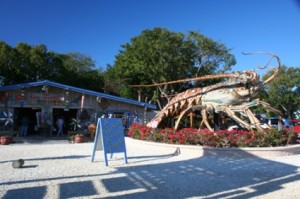
Islamorada, Florida. Photo © Daniel Martone.
It’s time to wrap up my current blog series—a list of 18 of my favorite small towns in America. So far, I’ve described 15 locales, including historic places like Bisbee, Arizona; Park City, Utah; Telluride, Colorado; Petoskey, Michigan; and St. Francisville, Louisiana.In this post, the final one of the series, I’m covering the last three towns on my list, all of which are situated along the East Coast:
While I’ll fully admit to adoring the laid-back town of Key West, the fact is that America’s Southernmost City isn’t the only worthy stop in the Florida Keys. Another favorite of mine is Islamorada, an Upper Keys village popular among sportfishing enthusiasts. With roughly 6,100 year-round residents, this “Village of Islands” encompasses five separate keys—Plantation Key, Windley Key, Upper Matecumbe Key, Lower Matecumbe Key, and Tea Table Key—and as I’ve blogged before, there are several family-friendly attractions here, including the History of Diving Museum, a curious collection of diving paraphernalia, from old-fashioned scuba tanks to underwater cameras, and the Theater of the Sea, the world’s second oldest marine mammal facility. Visitors might also appreciate exploring the nearby Indian Key Historic State Park and Lignumvitae Key Botanical State Park, both of which are only accessible via canoe, kayak, or boat. In addition, outdoor enthusiasts can swim, snorkel, and dive amid the warm waters surrounding Islamorada. Given its tranquil setting, this town is also known for its plethora of day spas and art galleries, such as The Rain Barrel (pictured above), a rustic village of local artists and artisans. As with other parts of the Keys, you’ll find a wide array of lodging and dining choices here, including the upscale Moorings Village, which lies within walking distance of two of my favorite eateries: the romantic Pierre’s Restaurant and the casual Morada Bay Beach Café. For more information about Islamorada, consult my Moon Florida Keys guide or Jason Ferguson’s Moon Florida.
Near the convergence of I-64 and I-81, along the eastern side of the Appalachian Mountains in northern Virginia, you’ll encounter the historic town of Lexington. Boasting about 7,040 residents, Lexington is, as with many of my favorite towns, a history lover’s paradise. Beyond the well-preserved downtown district, which is listed on the National Register of Historic Places, you’ll encounter several engaging attractions, such as the Virginia Military Institute Museum, which features antique firearms, cadet uniforms, and artifacts from the Civil War, among other military items; the Stonewall Jackson House, supposedly the only home that the famous Confederate general ever owned; and the Marshall Museum, which explores the military and diplomatic career of George C. Marshall, who served as a five-star Army general during World War II, the U.S. Secretary of State, and the President of the Red Cross, among other titles. Before visiting such museums, though, consider taking a narrated tour of this history-rich area via the Lexington Carriage Company. Of course, art lovers may relish a live concert, play, or dance performance at the Lenfest Center for the Arts on the campus of Washington & Lee University. Visitors will also find this photogenic area rife with orchards, vineyards, golf courses, and adventure outfitters. In addition, a scenic drive along the Blue Ridge Parkway is always worth a trip, and gorgeous Shenandoah National Park isn’t too far away. For more information about Lexington, consult Katie Githens’ Moon Virginia.
Given that it once served as a backdrop for the blockbuster film Jaws (1975), Martha’s Vineyard might be one of the more famous islands off the eastern coast of Massachusetts, but it’s Nantucket that I remember most fondly from my first encounter with this historic coastal region south of Boston. Besides, Nantucket has made its own impression on Hollywood—in movies as varied as Moby Dick (1956) and One Crazy Summer (1986). With a population of roughly 10,140, Nantucket actually encompasses three islands: Nantucket, Tuckernuck, and Muskeget. Considered the “whaling capital of the world” in the early 1800s, Nantucket Island is now part of the National Register of Historic Places. That’s no wonder given its picturesque docks, cobblestoned streets, and antebellum homes—and tourists, of course, appreciate its plethora of cozy inns, upscale stores, and fancy restaurants. Although Nantucket doesn’t have a ton of official attractions, visitors can get a taste of the island’s whaling history at the Nantucket Whaling Museum. In addition, recreationists can tour the main island via bicycle, relax on the scenic Brant Point Lighthouse Beach, or take a kayaking excursion in the surrounding waters. If you have time, you might also consider exploring the neighboring islands of Martha’s Vineyard and Cape Cod. For more information about Nantucket and its environs, consult Michael Blanding and Alexandra Hall’s Moon New England.
So, have you ever visited the small towns mentioned in this series? If so, do you agree with their inclusion on this list—and if not, why not? More importantly, do you have any favorites of your own?